Choszczno. 2024-11-04
Choszczno Railway Station.
Geographic coordinates: 53.165N 15.402E. Elevation 58 m (190.29 ft). Station address: ulica KOLEJOWA 1. 73-200 CHOSZCZNO.
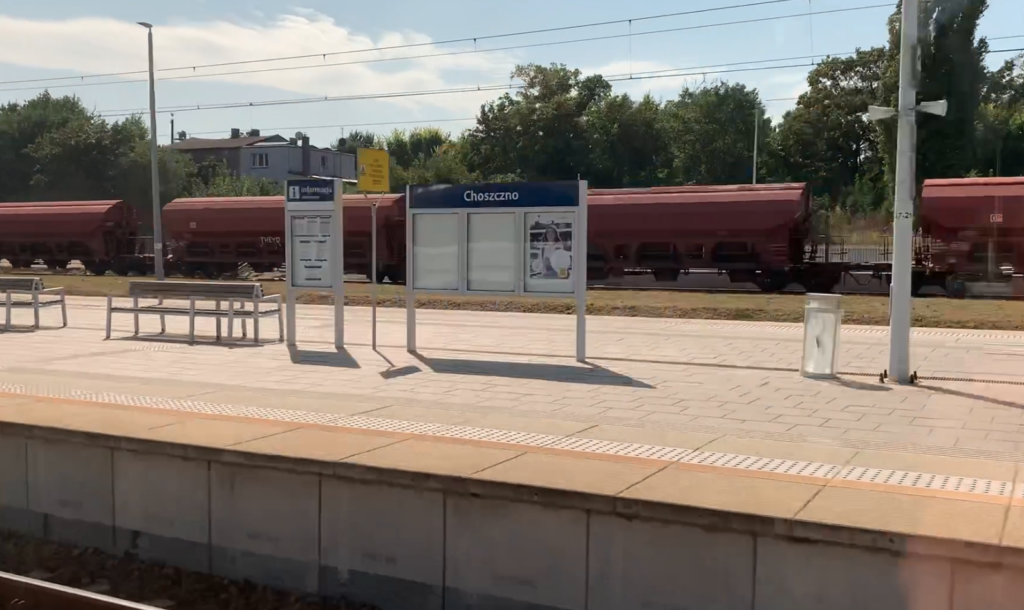
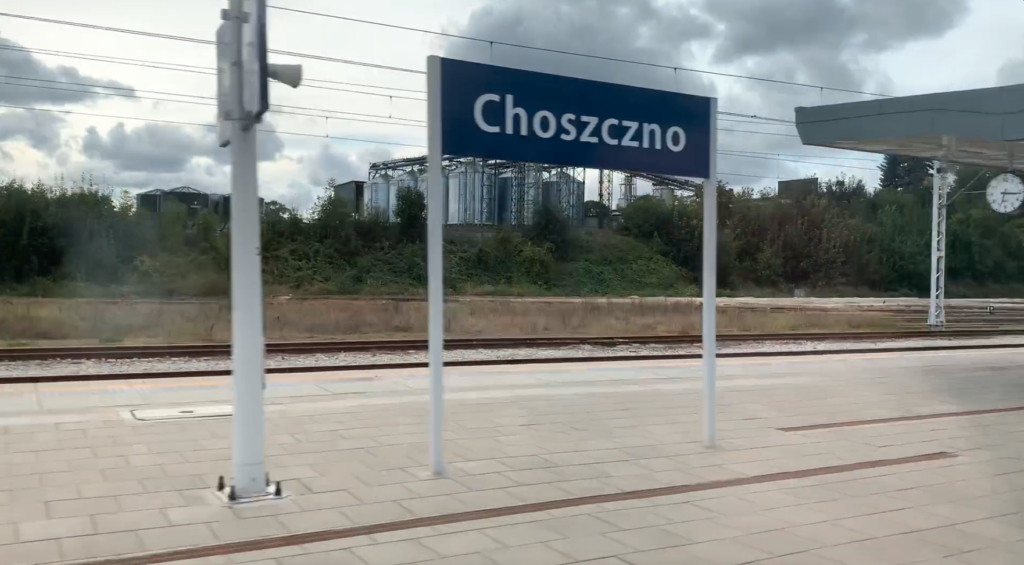
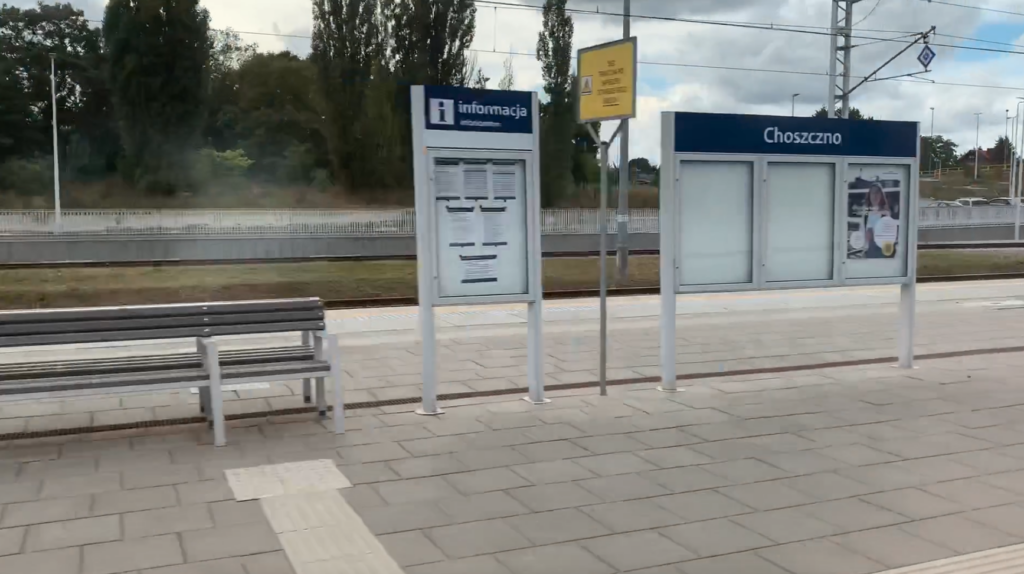
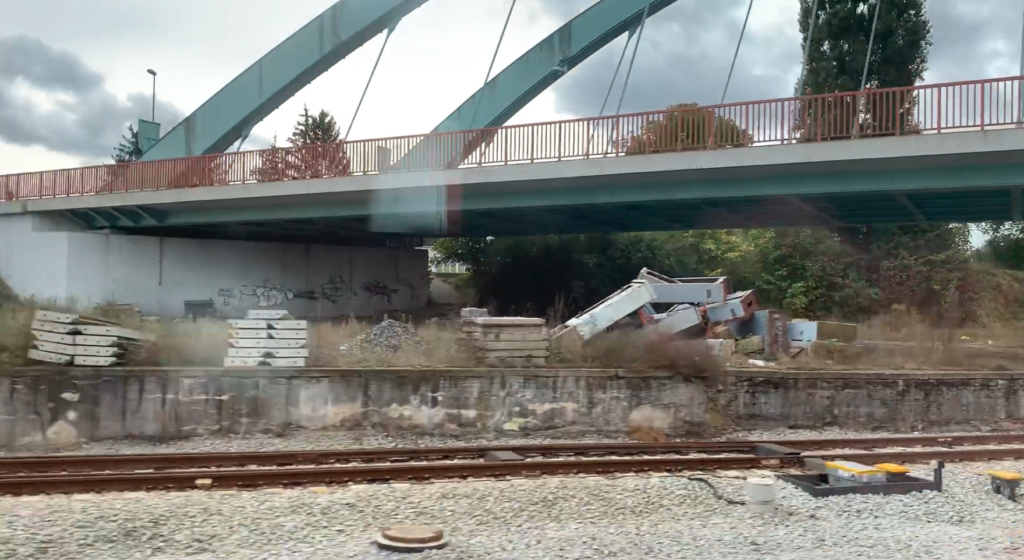
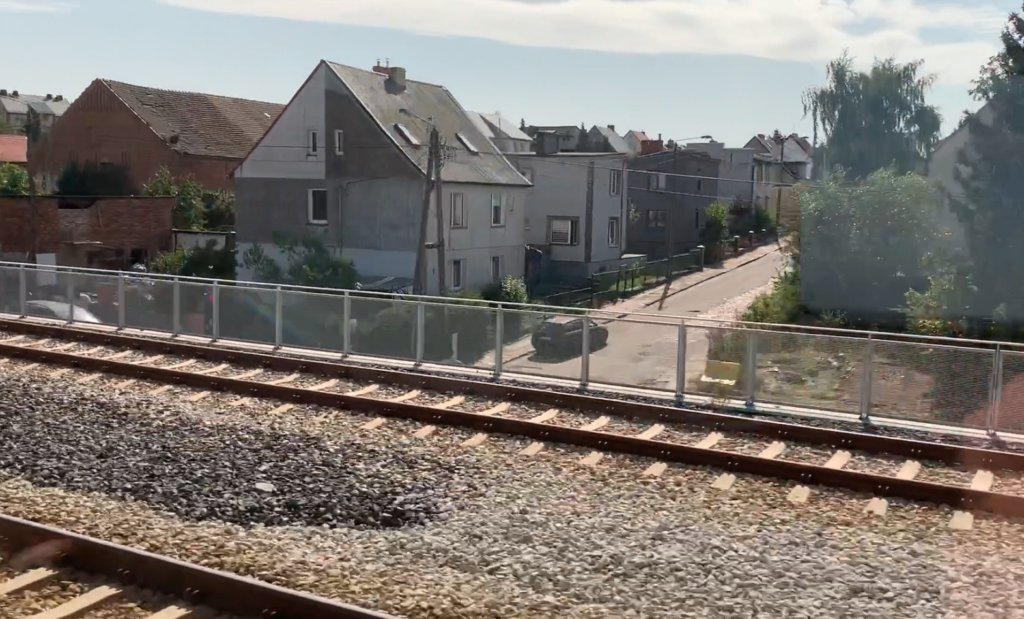
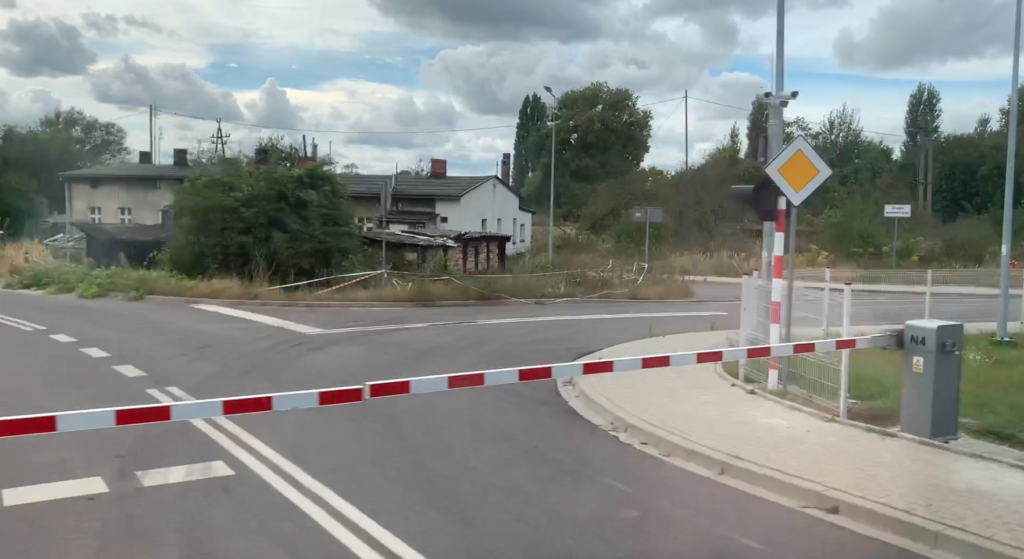
The city of Choszczno.
Choszczno is a city in northwestern Poland, in the West Pomeranian Voivodeship. The city has an area of 9.58 km2. The population is 13,986 (2023). In Germanic times, the city was called Arnswalde (Eagle Forest). The city is located in the Choszczno Lakeland and is located in the Stopnica River valley, which stretches from west to east, and the city lies on Lake Kluki. From Choszczno, the distance to: Stargard is 35 km. Szczecin is 73 km. Poznań is 146 km. Warsaw is 432 km. The following provincial roads run through the city: No. 151: Świdwin – Łobez – Węgorzyno – Recz – Barlinek – Gorzów Wielkopolski. No. 160: Suchań – Piasecznik – Choszczno – Drezdenko. No. 175: Drawsko Pomorskie – Kalisz Pomorski – Choszczno.
Historically, the city lies in the former Choszczno Land. In 1233, the Choszczno estate was granted to the Cistercian Fathers by the Greater Poland prince Władysław Odonic. The same prince also brought the Johannite Order to these areas in 1237. In 1433, Jan Długosz mentions the town as Harnsswaldalias Choschczno. Until the 13th century, the settlement belonged to the Kingdom of Poland, to Greater Poland, when it was seized by Brandenburg, later Germans. From the 17th century, agriculture, fishing and crafts developed in the city. A railway line to Choszczno was built in 1947. As a result, industry developed. By 1945, factories were established here: matches, agricultural machinery, cloth, roofing felt, wire, brushes and sugar. There were several family businesses here that the Germans closed down in the period 1933-1935 because they were Jewish businesses. This area returned to Poland in 1945, as a result of World War II, which was started by the Germans and the Muscovites.
Since 1933, the Germans had turned the town of Arnswalde into a military garrison. Large artillery barracks were built on the eastern side of the town, which were handed over to the army in 1937. The fratricidal fighting for Choszczno lasted about three weeks, at the turn of February and March 1945. The Germans had turned the town of Arnswalde into a fortress. There were about 80,000 soldiers on the Soviet side, and about 50,000 defenders on the German side. This was the time when the “Pomeranian Wall” had already been broken through and the Wehrmacht (Bundeswerk) was already in retreat. In Arnswalde, the Germans threw “Royal Tiger” tanks into battle. The town was destroyed by 80%. The Soviets occupied the town and the barracks, and ruled there until 1948. At that time, the barracks were handed over to the Polish Army. An artillery regiment was stationed there, and from 1962, missile troops. In 2001, the missile unit was disbanded. Currently, the Choszczno Self-Propelled Artillery Division, 12th Mechanized Brigade is stationed in Choszczno. Address: Drawieńska 42, 73-200 Choszczno.
From autumn 1939 to January 1945, the city had a large Germanic Oflag II B Arnswalde, on the grounds of the barracks. Polish soldiers were held in the camp, and then about 3,000 French soldiers.
As a result of the fighting in February/March 1945, the city was significantly destroyed. Then came the Soviet plunder by trophy units. After the city was taken over by the Polish administration in autumn 1945, the names Choczno and Choczen were temporarily in circulation. The name Choszczno was formally introduced on May 7, 1946. After the war, trade began to operate first, followed by some factories. It was not until the 1960s that construction began, and the water, sewage and electricity networks were expanded. The water in the water supply network comes from deep wells. A modern sewage treatment plant was launched in 2019.
Railway in Choszczno.
The railway line to Choszczno was built in 1947. As a result, industry developed. By 1945, factories were established here: matches, agricultural machinery, cloth, roofing felt, wire, brushes and sugar.
The construction of the Stargard – Poznań railway line began from the Krzyż Wielkopolski station in both directions; to Stargard and to Poznań. However, due to the proximity of Szczecin, work also started from the Stargard side. This allowed the Choszczno station to be launched as early as 1847.
Choszczno station is located on 138.740 km of LK No. 351 and on 143.676 km of the currently inactive (2024) LK No. 410 Grzmiąca – Kostrzyn. In 1945, Soviet trophy units dismantled many tracks in the Choszczno area. The Choszczno-Głazów and Lubiana-Strzelce Krajeńskie train stations were completely demolished.
The Choszczno train station.
The train station building was built in 1848, as a typical Prussian railway structure, according to standard plans. The building was multi-body. The central part was two-story, containing the main hall, waiting room, and ticket and baggage offices. The side wings housed a restaurant, railway service rooms, luggage storage, and apartments. The building was periodically renovated, but its shape did not change.
In the period 2008-2016, the train station building was renovated. The roof of the building, social rooms, ticket offices, and waiting rooms were renovated. Most of the work consisted of repainting, for example the waiting room (2016) and the building’s facade. The work took a long time because finances were limited and they were still counting on a general renovation. The ticket office was open until 2010. In 2009, the square in front of the station was renovated. Traffic organization was changed and the number of parking spaces was increased.
Since 2010, the building has been owned by the commune, which was taken over by PKP for unpaid taxes. In 2012, city councilors proposed the simultaneous revitalization of the station and the water tower, with the help of a preferential loan. The project envisaged the conversion of the station building into a shopping, restaurant and office center. Passenger service was also proposed, while a kiosk and a history room were planned in the water tower. The project underwent changes and in 2016, the creation of the Center for the Service of People at Risk of Social Exclusion was also planned. In 2018, the project gained approval.
In May 2019, the contractor for the modernization was selected, i.e. Przedsiębiorstwo Produkcyjno-Usługowe “Lidex”, and in July 2019, work began. The renovation of the station building lasted a year (2020). The general renovation included; waiting room, ticket offices, buffet. The building houses the Service Centre for People at Risk of Social Exclusion and the Municipal-Community Social Welfare Centre, and the city archives are located in the basement. The basements were built because they did not exist before. The cost of this investment was PLN 7.5 million.
Choszczno Station.
There were two platforms in Choszczno. Platform 1 was located on the side of the station building and had two edges. One track was through, and the other was on the north-eastern side, impassable, from which trains departed towards Kalisz Pomorski. Platform 2 was an island platform, with two edges. Access to the platforms was provided by a footbridge over the tracks, which was built in the 1950s. The footbridge was dismantled in 2020, due to the general modernisation of the station and the station building.
Choszczno had a fan locomotive shed with a steel structure. Initially, it had 4 stands, and later another 5 stands were added. The locomotive shed operated normally until 1995, servicing most types of locomotives. In the following years, its tasks were limited. Around 2000, the locomotive shed was abandoned. There were plans to create a railway open-air museum here. The facility was put up for sale, but there were no interested parties. The building was demolished in 2010. There is a water tower at the station, currently no longer in use.
The station was monitored by several CCTV cameras. The turnouts were serviced by a signal box with a relay system. On the side of Krzyż Wielkopolski there was a SKP station, which also serviced the rail-road crossing right next to the SKP, as well as the rail-road crossing 1 km away in the town of Gostyczyn. There were cameras and an audio system at the crossing. In 2023, this crossing was closed. The vast majority of the turnouts had automatic turnout drives, controlled remotely from the signal box. There were a small number of turnouts operated manually. The double-decker signal box with “Cz” was located on the Stargard side. The signal box was closed and dismantled in the autumn of 2022.
In the period 2019-2024, Choszczno station underwent a general renovation related to the renovation of LK no. 351 Poznań Główny – Szczecin Główny. The aim was to increase the safety of the route and increase the speed of passenger trains to 160 km/h. On October 1, 2020, the station reconstruction works began. The works began on Platform 1. The station is equipped with ESA 44-PL computerized traffic control devices.
The platforms that remained in the previous layout were completely rebuilt. The platforms were raised to 0.76 m from the railhead. Platform 1 is 240 m long and has a 200 m long roof. Platform 2 is 360 m long and has a 200 m long roof. The platform edges are made of 1 m x 2 m grey prefabricated slabs with yellow warning lines and buttons. The rest is lined with grey concrete pavement tiles. A linear water drain was installed. The platforms have benches, railway information display cases, an audio system, monitoring, waste bins, and lighting. After the last renovation, barriers for people with limited mobility and the blind and visually impaired were removed at the station. Access to the platforms was made in the form of a ramp and stairs. A tactile marking system was installed.
Over the past 10 years, the station traffic included 1,200-1,400 passengers per day. The collapse occurred in 2020, during the Chinese virus pandemic. From Choszczno station, on October 29, 2024, 30 passenger trains departed to: Chojna, Hrubieszów Miasto, Kraków Główny, Łódź Kaliska, Poznań Główny, Przemyśl Główny, Suwałki, Szczecin Główny, Świnoujście, Świnoujście Port, Warszawa Wschodnia, Zielona Góra Główna.
Railway lines in Choszczno.
Railway line No. 351 Poznań Główny – Szczecin Główny, is a mostly double-track line, of national importance, electrified with 3 kV DC current. The line runs from the south-east to the north-west. Line length 213.500 km. Maximum speed 160 km/h. The electrification of LK No. 351 took place in stages; On June 27, 1975, Poznań Główny – Rokietnica. On September 8, 1977, Rokietnica – Krzyż. On June 21, 1978, Krzyż – Choszczno. On December 15, 1978, Choszczno – Szczecin.
Railway line No. 410 Grzmiąca – Kostrzyn, is a single-track LK, non-electrified, has a length of 82.318 km. Maximum speed 80 – 40 km/h. Initially, the line was longer 61.164 km and started at the Grzmiąca station. The total length of the line was 240.45 km. The Barnówko – Kostrzyn section, which is its continuation, currently operates (2024) as LK No. 430. In 2024, active sections of railway line No. 410: Passenger traffic Kalisz Pomorski Miasto – Kalisz Pomorski, with a length of 2.716 km. Freight traffic Złocieniec – Mirosławiec, with a length of 23.232 km. The entrance to Choszczno from the Drawno side (Kalisz Pomorski) was dismantled in 2015. The exit to the Głazów station is terminated with a retaining trestle and is a hoist track.
Written by Karol Placha Hetman
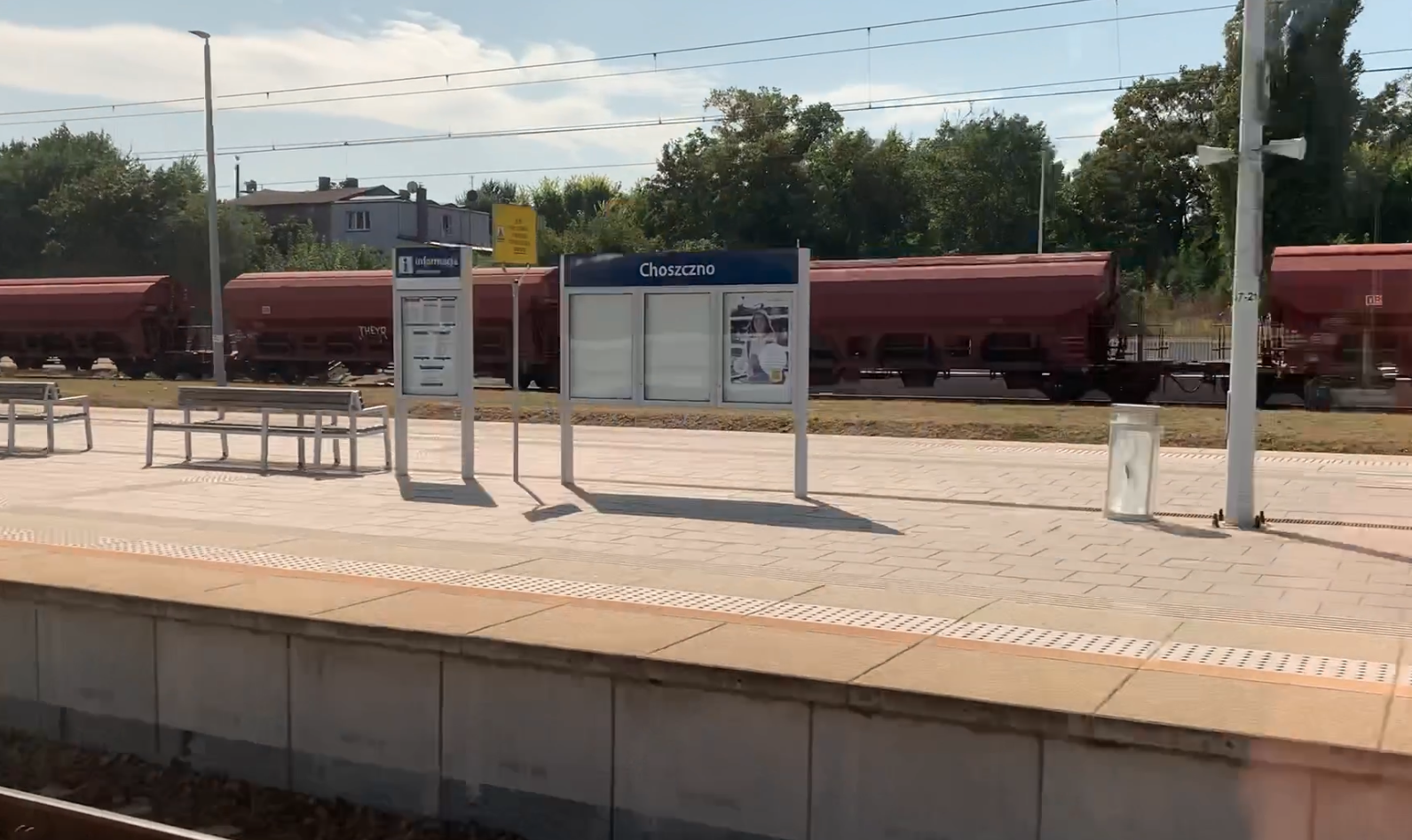
Leave a Reply
You must be logged in to post a comment.